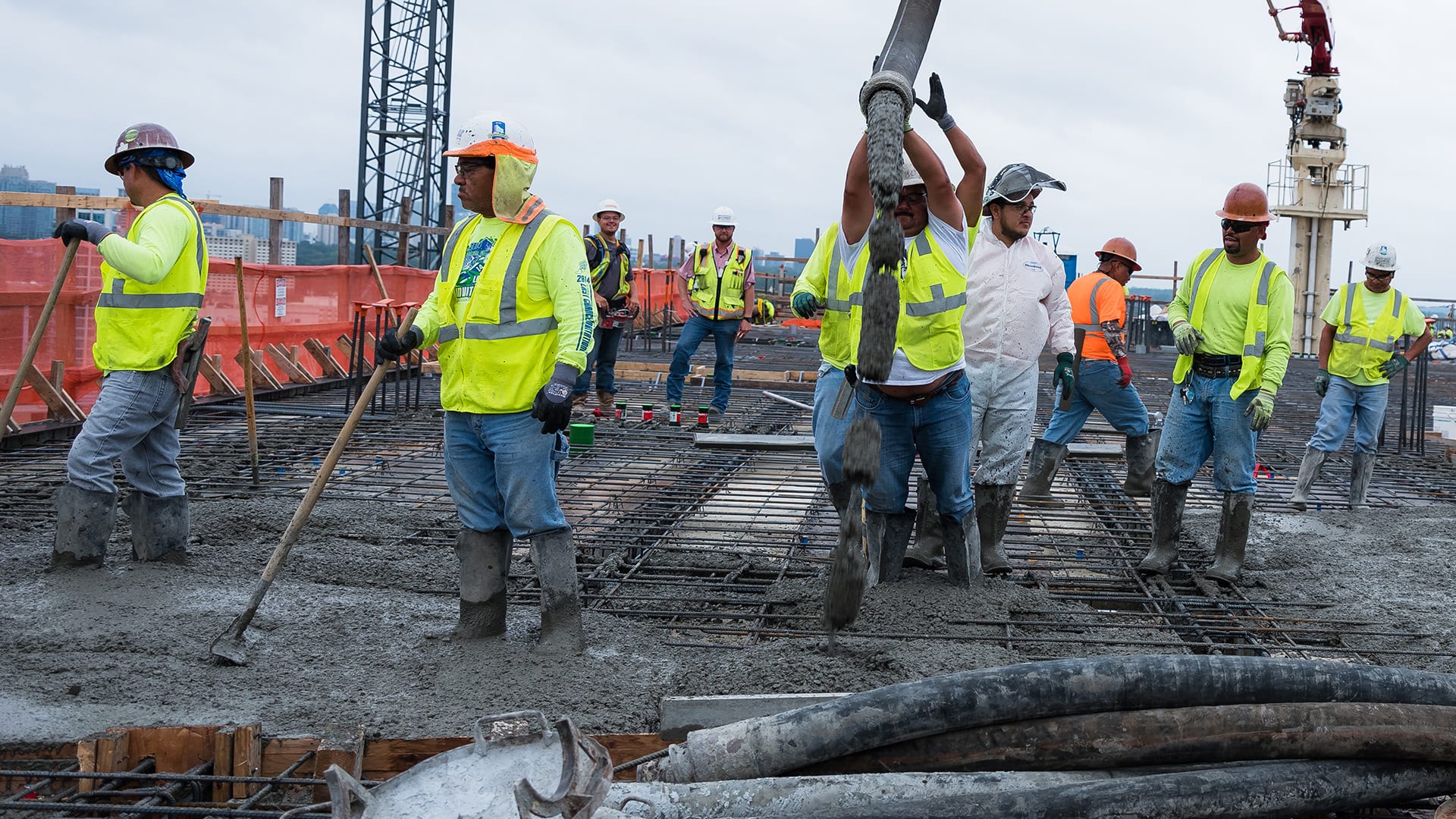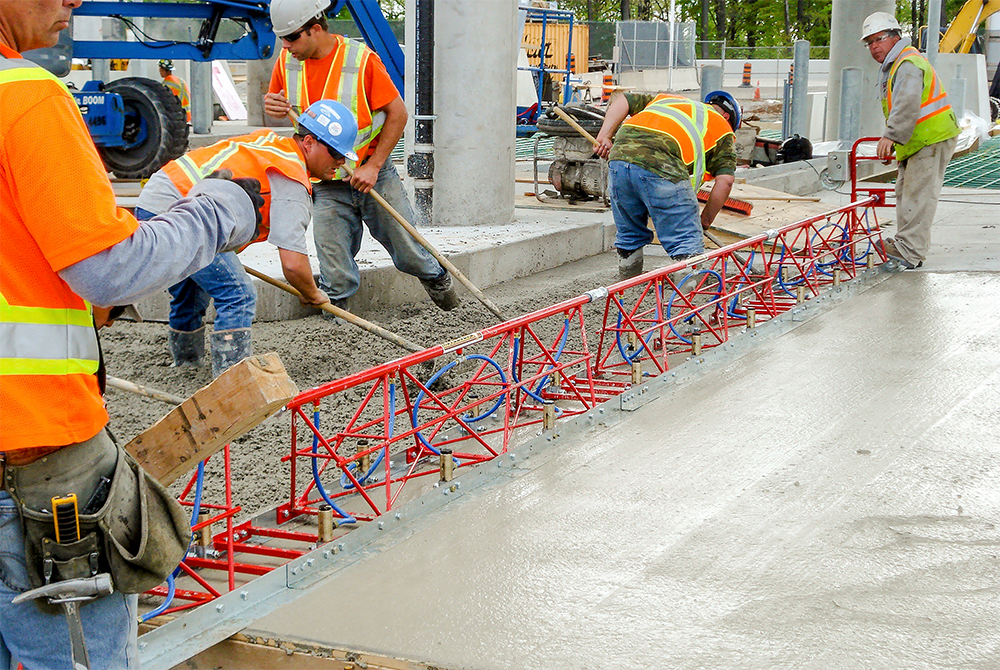The Important Function of Concrete Structure in Structural Honesty and Long Life
When it comes to building a home, the structure is a lot more essential than you may believe. Concrete structures supply unmatched strength and resilience, ensuring your structure can endure different environmental difficulties. Without a solid base, you run the risk of prospective problems like moving or splitting, which can jeopardize security and value. Comprehending the nuances of concrete structures can be the trick to protecting your investment for years to come. What should you consider following?
Comprehending the Significance of Concrete Foundations
Concrete foundations are vital to the total security of any framework, as they supply the necessary support needed to hold up against different loads and ecological problems. When you consider constructing a home or an industrial space, the structure is the first point you must consider. It works as an obstacle against dampness, safeguarding your home from water damages. A well-placed concrete foundation also prevents settling and moving, which can bring about fractures in wall surfaces and floors. You'll wish to ensure that the structure is appropriately made and strengthened, as this influences the longevity of your building. In addition, a solid foundation can improve power effectiveness by lowering air leakages. Remember, neglecting the significance of a concrete foundation can bring about expensive repairs down the line. Spending in a high quality foundation upfront is necessary for the integrity and resilience of your framework.
Benefits of Concrete Structures for Architectural Integrity
While numerous aspects add to a structure's structural honesty, concrete structures supply unrivaled toughness and strength. You'll value that concrete can withstand extreme weather, standing up to both dampness and temperature fluctuations. This resilience implies your framework is much less most likely to experience fracturing or changing over time, which can compromise its safety.Additionally, concrete's fundamental weight offers a strong base, stopping motion during natural events like earthquakes or floods. When you choose a concrete foundation, you're also opting for low upkeep; unlike timber, it will not rot or draw in bugs, saving you money and time in repairs.Moreover, concrete's fire resistance provides added safety, guaranteeing your framework can withstand high temperature levels without considerable damage. Overall, buying a concrete structure indicates you're focusing on the long-lasting stability and integrity of your structure, making it a smart option for any type of building job.
Common Kinds Of Concrete Foundations
When it pertains to building foundations, understanding the common kinds of concrete structures can help you make informed selections for your job. One of the most common types consist of slab-on-grade, crawl area, and full cellar foundations.A slab-on-grade foundation is an easy, affordable alternative, where a thick concrete piece is poured straight on the ground. This type functions well in warm climates, as it lessens heat loss.Crawl space structures raise the home slightly over ground, permitting ventilation and accessibility to pipes and electrical systems. This design can aid stop moisture issues.Full cellar foundations supply additional living or storage room while offering excellent architectural support. They call for more excavation and are usually used in chillier climates to prevent frost heave.
Aspects to Consider When Creating a Concrete Foundation

Finest Practices for Putting Up Concrete Foundations
When you're setting up a concrete structure, appropriate website prep work is important to ensure stability (West Coast General Engineering industrial concrete). You'll additionally need to understand reinforcement methods to improve toughness and resilience. Ultimately, don't forget the healing process, as it plays an essential duty in attaining a solid foundation
Website Prep Work Relevance
Although it might appear uncomplicated, appropriate website prep work is crucial for assuring a solid and durable concrete structure. Beginning by removing the area of any particles, greenery, or natural product that could jeopardize the structure's honesty. Next, examine the soil type and compaction; you may require to dig deep into or add products to produce a stable base. Level the ground to assure even weight distribution and prevent resolving concerns later. Mounting appropriate water drainage systems is likewise important to protect against water buildup, which can compromise the structure gradually. Finally, define the foundation's measurements precisely to direct the pouring process. By complying with these steps, you'll establish the stage for an effective concrete structure that stands the test of time.
Support Techniques Described
As soon as the site is properly prepared, the next action in assuring a strong concrete foundation entails executing reliable support strategies. You ought to begin by using steel rebar, which offers tensile strength and assists protect against splitting. Lay the rebar in a grid pattern, seeing to it it rises using spacers to keep proper coverage. Furthermore, take into consideration making use of cable mesh for extra assistance, especially in locations subject to heavy tons. Don't forget to link the rebar intersections safely with cord. For bigger foundations, fiber support can enhance longevity, lowering the threat of shrinkage cracks. Always comply with neighborhood building regulations and standards to ensure conformity. By using these reinforcement methods, you'll substantially increase your foundation's stamina and long life, laying a solid groundwork for your framework.
Treating Process Fundamentals
To ensure your concrete structure cures appropriately, it is very important to preserve ample moisture and temperature problems immediately after pouring. Beginning by covering the surface with a damp burlap or plastic sheeting to preserve dampness. This keeps the concrete hydrated, preventing splits and ensuring toughness. You must also keep an eye on the temperature level; perfect treating problems are in between 50 ° F and 90 ° F. If it's also warm, haze the surface area routinely to avoid fast dissipation. For cool climate, take into consideration making use of insulating blankets to maintain warmth. Goal for a healing period of at least 7 days, as this is vital for optimal strength advancement. By following these finest methods, you'll enhance your structure's longevity and durability, guaranteeing structural integrity for years to come.
Maintenance of Concrete Structures for Long Life
To maintain your concrete foundation solid and long lasting, regular inspections are essential. You should additionally assure efficient water drainage remedies remain in area to avoid water damages. If you find any kind of cracks, resolving them promptly will conserve you from bigger troubles down the line.

Regular Evaluations and Evaluations
While normal evaluations and analyses might appear like a job, they're vital for keeping the integrity of your concrete foundation. By regularly examining for cracks, shifts, or indications of wear, you can capture potential concerns before they rise right into costly fixings. Seek any kind of water merging around the structure or uncommon settling, as these can signal underlying troubles. It's additionally sensible to check any kind of modifications in your house's framework, like doors that stick or home windows that do not open efficiently. Keeping a record of your inspections assists track adjustments with time, permitting for positive maintenance. Eventually, these evaluations ensure your foundation stays steady, supporting the durability and security of your whole framework. Don't overlook this crucial element of homeownership!
Efficient Drain Solutions
Regular examinations can reveal concerns like drain problems that might endanger your concrete foundation's security. To stop water accumulation, assure your rain gutters and downspouts direct water far from the structure. Installing French drains pipes can successfully reroute surface and groundwater, reducing pressure on your foundation wall surfaces. Furthermore, grading the soil around your home assists assure that water flows away, instead than pooling near your foundation.Consider utilizing sump pumps in locations vulnerable to flooding, as they actively remove excess water. Routinely examine for clogs in water drainage systems and clear them quickly. best site You'll safeguard your structure's integrity and durability by taking these aggressive measures. Bear in mind, efficient drain remedies are necessary for maintaining a strong, sturdy concrete structure.
Prompt Fracture Services
When you discover splits in your concrete structure, check my reference addressing them immediately is vital for maintaining its long life. Small cracks can promptly develop into larger concerns, endangering the structural integrity of your home. Regularly check your foundation for indications of damage, such as horizontal or upright fractures. If you detect any type of, do not wait-- repair them quickly. You can use epoxy shots or concrete patching compounds, which are efficient for securing fractures. Constantly follow the producer's guidelines and consider getting in touch with a professional for considerable damages. Remember, timely fixings not only improve your structure's durability however also save you money in the future by avoiding much more extensive repairs down the line. Remain positive, and your structure will certainly stay strong and safe.
Dealing With Usual Problems With Concrete Structures
Concrete foundations can encounter numerous problems over time, making it essential to recognize and resolve them promptly. One of one of the most usual issues is splitting, which can happen because of temperature fluctuations or resolving dirt. If you see splits, it's vital to assess their size and deepness; small fractures can commonly be secured, while bigger ones might call for specialist evaluation.Water breach is one more significant worry. Excess moisture can bring about mold and mildew development and structural degeneration. Assurance appropriate drainage around your foundation to mitigate this threat. In addition, seek indicators of moving or bowing walls, as this can indicate underlying issues with your structure's stability.Regular examinations are essential to catch these problems early. If you spot any kind of worrying indications, don't wait to get in touch with a structure professional. By staying aggressive, you can preserve the integrity and longevity of your concrete structure, ensuring your home remains secure and safe.
Often Asked Questions
Just How Does Soil Kind Impact Concrete Foundation Efficiency?
Soil type considerably impacts concrete structure efficiency. If you've obtained extensive clay, as an example, it can trigger shifting and fracturing. Sandy soil could cause working out. Recognizing your soil aids ensure a stable foundation.
Can Concrete Foundations Be Fixed if Harmed?
Yes, you can fix broken concrete foundations. Depending on the extent of the damages, strategies like epoxy injection or slab jacking can bring back stability. It's finest to get in touch with a specialist for reliable options.
What Is the Common Lifespan of a Concrete Foundation?
A concrete foundation generally lasts 30 to 100 years, relying on factors like dirt problems, climate, and upkeep. You'll wish to watch on it to assure it remains in great form throughout its lifespan.
Are There Choice Materials to Concrete for Foundations?
Yes, there are choices to concrete for foundations, like steel, timber, or look at this now perhaps recycled materials. Each option has special advantages and drawbacks, so you ought to consider your task's specific requirements when selecting the appropriate material.
Exactly How Does Environment Influence Concrete Foundation Sturdiness?
Environment substantially impacts concrete foundation toughness (West Coast General Engineering industrial concrete Rancho Cucamonga). Extreme temperature levels, dampness, and freeze-thaw cycles can compromise the material, bring about fractures and structural concerns. You must think about regional climate conditions when preparing your foundation to guarantee long-term performance